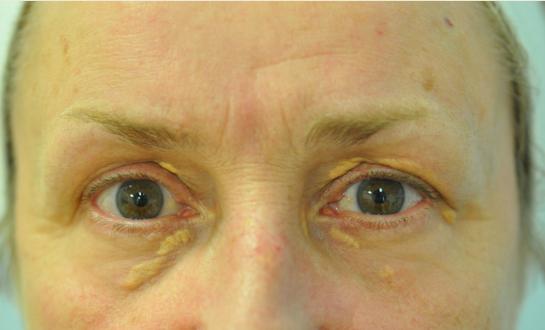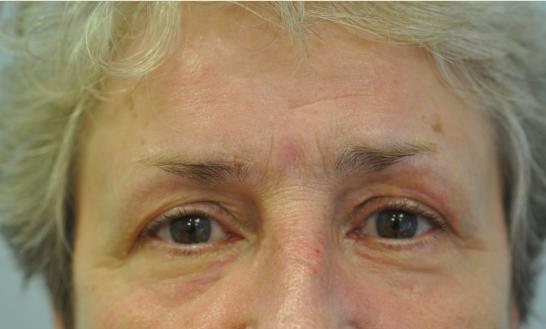Often recognised by sight but not necessarily by its name, Xanthelasma is an unpleasant skin condition which, for many throughout the UK, can have a significant impact on self-esteem. Helping to shed some light
Here Vicki Smith, Clinical Director of Absolute Aesthetics, a specialist clinic in Guildford, Surrey explains key facts surrounding the condition, who is most at risk of developing, and what the best treatment options available are

Q. What is Xanthelasma?
A. Xanthelasma is an often unwanted and upsetting skin condition which can be identified by a series of yellow plaques which build up both above and below the eyelids. Once someone has Xanthelasma they may find that the plaques grow in size however, unfortunately they won’t regress unless specialist treatment is sought.
Q. What causes the condition to occur?
A. Common factors which are often associated with Xanthelasma include high levels of cholesterol, and heart disease. Many in the medical world also link the condition to a lipid imbalance within the body. If Lipid levels within the blood stream become too high, it can cause fatty deposits or plaques.
Q. Who is most at risk of developing Xanthelasma?
A. High cholesterol can be hereditary so there is a strong argument that some people may be more predisposed to developing Xanthelasma because of this. The condition is also known to affect women more than men, and is most prevalent amongst those over 40.
Q. Is the condition painful?
A. In some instances Xanthelasma suffers will experience some mild irritation however, on the whole the condition is known to be pain free – and doesn’t have any impact on eye function. Although it is not physically harmful, it is not uncommon that suffers find the condition distressing due to its appearance and prominent position.
Q. What is the best course of action for anyone who is concerned about suffering from Xanthelasma?
A. If you are in any way concerned that you are suffering from Xanthelasma then my advice would be to consult a skin expert, as once a diagnosis has been made then there are a number of different treatment options which can be considered.
If you are suffering from high cholesterol my initial recommendation would be to make a GP appointment for a blood pressure and cholesterol and lipids (blood fats) tests. You may also be advised to make changes to your diet as this could help to lower your cholesterol levels. By doing so this will help to reduce your lipid levels and prevent the condition from developing further.
It is possible to have the plaques removed through a surgical procedure however, it is important to note that this method can carry the risk of scarring and patients would also require a period of recovery time post procedure.
I have carried out a lot of research into this condition over recent years and from this research have developed an effective treatment using advanced electrolysis. Aside from being quick and very effective, the main advantage of this treatment is that the patient will only experience some discomfort during the procedure but no discomfort afterwards and any resulting scabs will disappear within 5-10 days following the procedure.
For more information on the condition and the advanced electrolysis treatment offered by Vicki and the team, please visit www.absoluteaesthetics.co.uk


